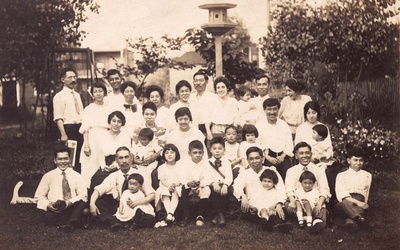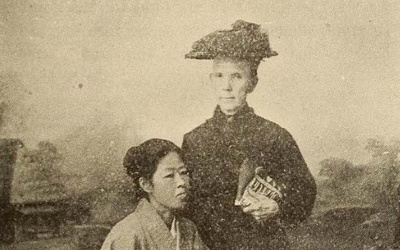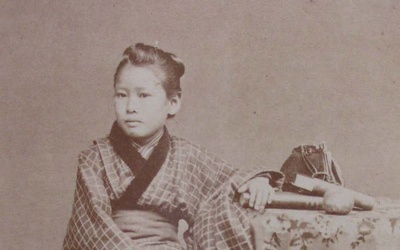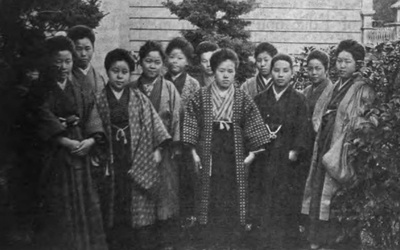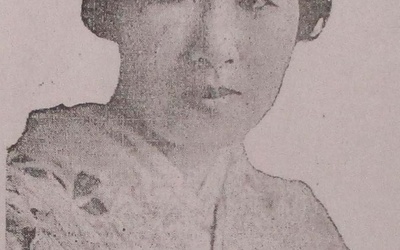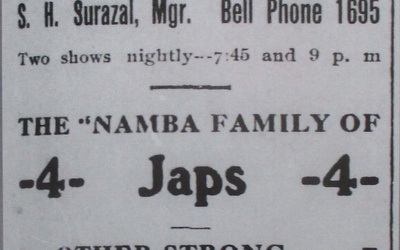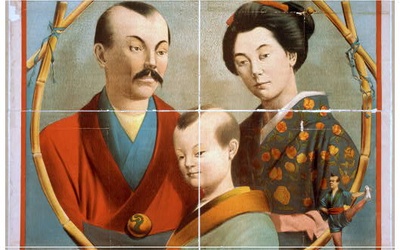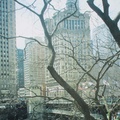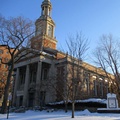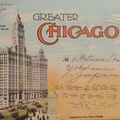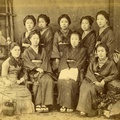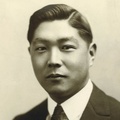
Takako Day
@takako70Takako Day, originally from Kobe, Japan, is an award-winning freelance writer and independent researcher who has published seven books and hundreds of articles in the Japanese and English languages. Her latest book, SHOW ME THE WAY TO GO HOME: The Moral Dilemma of Kibei No No Boys in World War Two Incarceration Camps is her first book in English.
Relocating from Japan to Berkeley in 1986 and working as a reporter at the Nichibei Times in San Francisco first opened Day’s eyes to social and cultural issues in multicultural America. Since then, she has written from the perspective of a cultural minority for more than 30 years on such subjects as Japanese and Asian American issues in San Francisco, Native American issues in South Dakota (where she lived for seven years) and most recently (since 1999), the history of little known Japanese Americans in pre-war Chicago. Her piece on Michitaro Ongawa is born of her love of Chicago.
Updated December 2016
Stories from This Author
Part 3: For Mothers and Children—Haha No Kai
April 9, 2023 • Takako Day
Read Part 2 >> With Yone, Misaki Shimazu founded Haha No Kai (Mother’s Home) in 1913 to supervise and take care of children. The home also served as the Shimazu’s own residence.1 One of the reasons they opened the home was that Yone herself became a mother; around 1913 the childless Shimazu couple adopted and began raising two Japanese children, a boy and a girl. When adopted, the girl, Fumiko, born in 1909 in New York, was four, and her …
Part 2: For Women—Nihon Fujinkai
April 2, 2023 • Takako Day
Read Part 1 >> Yone Shimazu formed Nihon Fujinkai, the Japanese Women’s Club in May 1911. The aim of the club was “charitable, beneficial to unfortunate Japanese, promoting friendship among the Japanese ladies, building individual character.” The club had about forty members and it was comprised of Japanese women and American women who were married to Japanese men. The club held meetings at the JYMCI (Japanese Young Men’s Christian Institute), where they enjoyed reading, talking, knitting, crafting, American cooking, music, …
Part 1: Yone Hara
March 26, 2023 • Takako Day
Even though their population was very small, the Japanese in pre-war Chicago were still able to form various groups and organizations beginning just before the Columbian Exposition in 1893. One of the organizations which became a center for the Japanese community in pre-war Chicago,was the Japanese Young Men’s Christian Institute (JYMCI), known as the Japanese YMCA by locals, led by Misaki Shimazu from 1908 to 1929. The roughly twenty years of activities of the JYMCI on behalf of local Japanese in Chicago were the fruitful …
Chicago Women Missionaries and Japanese Women - Part 2
Feb. 14, 2023 • Takako Day
Read Part 1 >> Hishikawa Yasu came to Chicago in 1886, guided by Presbyterian Sarah Cummings. After graduating from the English Speaking School for Japanese Young Ladies (later known as Yokohama Kyoritsu Gakuen), which had been opened in Yokohama in 1871 by the Women's United Overseas Mission Board, Yasu received her medical training while helping Sarah in Kanazawa. In Chicago, she entered Chicago Woman's Medical College, Sarah's alma mater, and graduated in 1889. Specializing in gynecology and pediatrics, Yasu did …
Chicago Women Missionaries and Japanese Women - Part 1
Feb. 13, 2023 • Takako Day
As I continue to uncover the Japanese who came to Chicago before the war, what attracts me the most and inspires me is, without a doubt, the spirit and talent of the Meiji women. Their energy brings to light the wonder of life, colored by encounters, and the richness and beauty of history. A distinctive feature of the Japanese population in Chicago before the war was the large number of Christians. Shimazu Misaki, who carried out missionary work among the …
Chapter 2 (Part 6): Japanese Acrobats and Entertainers in Chicago—After World War I
Oct. 30, 2022 • Takako Day
Read Chapter 2 (Part 5) >> Unfortunately, after World War I, the tide began to turn for Japanese performers. In February 1922, just before the Immigration Act of 1924 completely barred further immigration from Japan, Consul Kuwashima in Chicago reported to Foreign Minister Uchida as follows: “Peculiar and specialized Japanese entertainers such as singers of Naniwa bushi and biwa players, Rakugo performers, and others cannot earn any profit for performing. Nevertheless, Japanese acrobats still can be seen sometimes performing in …
Chapter 2 (Part 5): Japanese Acrobats and Entertainers in Chicago—Kumataro Namba and His Troup
Oct. 23, 2022 • Takako Day
Read Chapter 2 (Part 4) >> By the time the U.S. entered World War I, Namba had moved from 1227 E. 71st to 6348 Dante Avenue in Chicago. Known as the “Namba House,” this address was the haunting of many Japanese performers.1 The other residents were performers such as actor Toyokichi Totsuka, age twenty-four; Katsumi Sato, age twenty-three; Daigoro Fujisawa, age twenty-three; and Asashige Takagi, age twenty-three, who was a jiu-jitsu performer for the Ringling Bros Circus.2 A few years …
Chapter 2 (Part 4): Japanese Acrobats and Entertainers in Chicago—Kumataro Namba and Children Acrobats
Oct. 16, 2022 • Takako Day
Read Chapter 2 (Part 3) >> The surname “Namba” appears in the 1910 Chicago census, documenting thirty five-year-old Otra Namba, troupe manager, and Toki Murata, a twenty six-year-old contortionist, as residing at 1227 E. 71st Street in Chicago. Otra had come to the U.S. in 1890 at the age of fifteen, and Murata in 1900.1 While it is not known when Otora Namba came to Chicago, Otora, a vaudeville actress, had married a Japanese animal trainer, Yosaka Kudara, in Mexico …
Chapter 2 (Part 3): Japanese Acrobats and Entertainers in Chicago—Growing Up as Acrobats to Be An American
Oct. 9, 2022 • Takako Day
Japanese Acrobats in 1904. (Library of Congress, Motion Picture, Broadcasting, and Recorded Sound Division) Read Chapter 2 (Part 3) >> One of the main reasons for the popularity and attraction of Japanese troupes in the U.S. was the inclusion of small children in their performances. For example, Kitamura’s young daughter was named Peach Blossom and her smile was very attractive to the American audience.1 The Tetsuwari troupe “members received their training from the time they were youngsters. They were taught how …
Chapter 2 (Part 2): Japanese Acrobats and Entertainers in Chicago—As Residents of Chicago
Oct. 2, 2022 • Takako Day
Read Chapter 2 (Part 1) >> One of the new breed of Japanese entertainers who came to stay was Fukumatsu Kitamura, a juggler from Fukui. The Kitamura Troupe was founded exclusively for overseas tours and their first U.S. tour, which included a stop in Chicago, was in 1890.1 They returned to Chicago in 1901 as the Kitamura Imperial Japanese Troupe of acrobats, with seventeen members,2 including Kitamura’s wife, Hisa, age thirty-seven, and his daughter, Kane, age eighteen, who were both jugglers.3 Kitamura …


